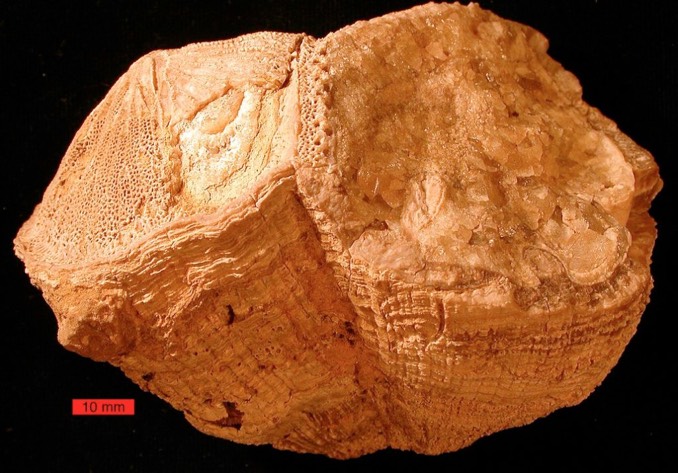
Seventy million years ago, Earth rotated 372 times in a year that included seven more days than our current 365-day year. That faster rotation means Tyrannosaurs Rex and other dinosaurs lumbering about in the late Cretaceous enjoyed shorter, 23-and-a-half-hour days.
Scientists already knew days were shorter in the past thanks to the gravitational interplay between Earth and moon. Friction from gravity-driven ocean tides slows Earth’s rotation ever so slightly and in the process causes the moon to move ever so slightly farther away. Earth’s satellite is currently receding about 3.82 centimetres (1.5 inches) per year.
But the recession rate has not been constant over time, and accurately determining the effects on the Earth-moon system has been difficult.
Enter Torreites sanchezi, an extinct bi-valve clam that looked like a bearclaw pastry atop a pint glass. The mollusks grew in dense reef environments like modern oysters and thrived in warm waters. They were blasted into extinction 65 million years ago by the same asteroid impact that doomed the dinosaurs.
“Rudists are quite special bivalves,” said Niels de Winter, a geochemist at Vrije Universiteit Brussel and lead author of a new study. “There’s nothing like it living today. In the late Cretaceous especially, worldwide most of the reef builders are these bivalves. So they really took on the ecosystem building role that the corals have nowadays.”
Members of a group known as rudist clams, the ancient mollusks grew fast and laid down daily growth rings. A team of researchers studied a single individual of T. sanchezi that lived for more than nine years in a shallow tropical sea some 70 million years ago. It was found in what are now mountains in Oman.
Using lasers to bore holes just 10 micrometres wide in bits of shell, the researchers were able to accurately measure daily growth rings and characterise seasonal variations that indicated the passage of years.
“We have about four to five data points per day, and this is something that you almost never get in geological history,” de Winter said. “We can basically look at a day 70 million years ago. It’s pretty amazing.”
The conclusion: a day in the life of Torreites sanchezi was a half hour shorter than today, the most accurate determination to date for the late Cretaceous.



